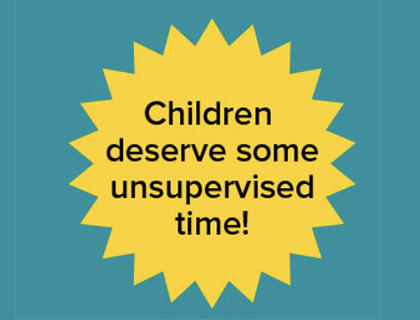This week, a jury in Manhattan found Pedro Hernandez guilty of murdering Etan Patz in 1979. As the New York Times reports:
Pedro Hernandez, a former bodega stock clerk who confessed to luring 6-year-old Etan Patz into a basement and attacking him, was found guilty on Tuesday of murder and kidnapping, a long-awaited step toward closure in a case that bedeviled investigators for decades and changed forever the way parents watched over their children.
A Manhattan jury convicted Mr. Hernandez on the ninth day of deliberations after the second of two lengthy trials that brought renewed attention to Etan’s disappearance on May 25, 1979, as he walked to his school bus stop alone in SoHo for the first time.
The story of Etan is one that still comes up when parents, especially here in New York, explain why it feels too dangerous to send their kids outside, unsupervised. His death is used to justify not just the fear, but to reinforce the sickening comfort some take in thinking it was the parents’ fault: “THEY were lax, their CHILD paid the price. Anyone could have predicted it.” Which is why, after the hung jury in the Etan murder trial two years, ago I wrote:
A reporter called me for comment after the Patz trial ended in a hung jury asked me the question that I get asked, one way or another, all the time. Sometimes it is by parents trying to feel less anxious. Sometimes it is by the media trying to stir that anxiety up.
Either way, it is this:
“What would you say to parents who are interested in letting their kids walk home from the park but are too nervous that their child might be the next Etan?”
Oh, so much.
Parents afraid that their child might be the “next Etan” are understandably fearful, since we have been hearing about this case for 36 years. It is our New York catechism. We have been trained to reflexively picture the saddest possible fate — basically, Etan’s — before we let our kids do anything on their own. I call this “worst-first thinking” — thinking up the worst case scenario first, and proceeding as if it is likely to happen.
It is depressing. It is paralyzing. But it isn’t really keeping our kids any safer. Too see why, try this:
Imagine if, 36 years ago, a child — call him Frederick — had died falling down the stairs. It is a rare way to die, but it happens. Now imagine that Frederick’s case had received inordinate media attention. Article after article. Television story after television story. “Remembering Frederick” would be the headline on the cover of People magazine, and the name of a docudrama. But would it make sense for parents to feel heart-stopping fear every time their kids wanted to walk down the stairs?
Or to escort the kids down the stairs every time?
Of course not.
One terrible, tragic case that happened when a child was doing something that is generally very safe and normal should not change the way we go about everyday life.
And yet, along with some other high profile cases, it has — even though we are living at a time when the murder rate is back to what it was in 1965, when parents could let their kids go outside without anyone intoning, “But what if they never come home?”
This heart-stopping question does nothing to make kids safer. They are VERY safe walking down the stairs, and VERY safe waiting for the school bus. But they are not TOTALLY safe ever, anyplace.
So we can live in fear of very rare, very random events that we can’t possibly predict in the course of everyday life. Or we can remember the best aphorism anyone ever sent to my blog: “All the worry in the world doesn’t prevent death. It prevents life.“




11 Comments
Poor little guy – and for what?
It’s a primal fear. I mean, just look at that face. We all see our own children. And knowing that they are far more likely to die falling down the stairs…well falling down the stairs is so mundane people rarely think about it. Our brains take us where they choose.
I was reading about this yesterday and how this incident was touted as starting the ‘stranger danger’ movement. Again, sometime in your young life you may actually need a stranger to help you. When my son was younger, I let him go a few blocks around our house on his bike. He fell off and hurt himself (skinned legs, cut, bruised) A nice man who lived in our area saw this as it happened in front of his house, cleaned up his cuts with water and a paper towel and escorted him home. I didn’t know him from Adam but I was appreciative all the same. What are the odds that man may have been a pedophile ready to drag my son into his house, do god knows what and we never would see him again? Slim to none. In the Etan Patz case it does happen.
Jetsanna …. that was the best thing I’ve read all day. Your mind DOES take you where you choose. Absolutely excellent analogy.
Far more children are murdered by their parents and other family members than are murdered by strangers.
Interesting, just today a mom friend of mine posted about how a young boy about 9 was about to get into her car (total stranger) because he misunderstood her signal to go ahead and cross the street. So this is timely. We need to know our kids, talk to our kids, trust our kids and trust our communities (unless there is something untrustworthy about the community).
And we need to let the need for our kids to grow up to take precedence over the need to protect them from every possible harm.
There’s another fear being talked about in some of my circles – I won’t get into it here because it is political and I’d rather stay away from politics here. Well there are several fears to choose from in political talk (all sides). Always about these tiny remote possibilities that “could” happen so we need to “prepare” our children and ourselves bla bla bla. What bugs me is that they are teaching their kids to be afraid in ordinary everyday dealings. Many of these kids have been in therapy for anxiety etc. – and I can’t help but wonder if there is some causation there.
Well here’s my take on it. My kids and I travel by plane a lot. On any flight, our plane “could” be sabotaged or just simply crash. Do you think I talk about this “possibility” with my kids before we take off? Nope. What I do tell them is what *they* can and should do to keep safe. Yes, I tell my kids not to get in cars or go off with people. I tell them how we all need to act if a cop (or similar) stops us. I tell them what information they must not share electronically. Then I shove them out the door to go and live life.
To James’ point, I have always felt that kids are safer if they are out in the community, where good people may notice if they show signs of being mistreated. They will be safer still if they are encouraged to socialize with community members (within reasonable guidelines). Then the neighborhood will notice if something isn’t right and will likely intervene, even if it’s just to approach and say, “how are you today”? I believe that interaction with normal everyday people saves kids’ lives.
Thanks for the common-sense / “real stats” reminders. Funny enough, I lay awake last night not thinking about my children and ‘stranger danger’, but how to reconcile that such evil exists among us / how someone like Pedro Hernandez could do what he did. There are no answers of course, just sadness.
Well said, Lenore.
Extremely well said.
I think that the journalists need to think about consequences like this. I think it should become customary to emphasize the rarity of these events when they are reported on. But, somehow, I don’t even know if that would work. I have tried out Lenore’s statistical rhetoric on some of the worst-first thinkers I know, and it appears that a lot of times, they are simply beyond reason.
Thank god for Lenore Skenazy a real champion for kids and parents and an exemplary General semanticist whether she knows it or not.